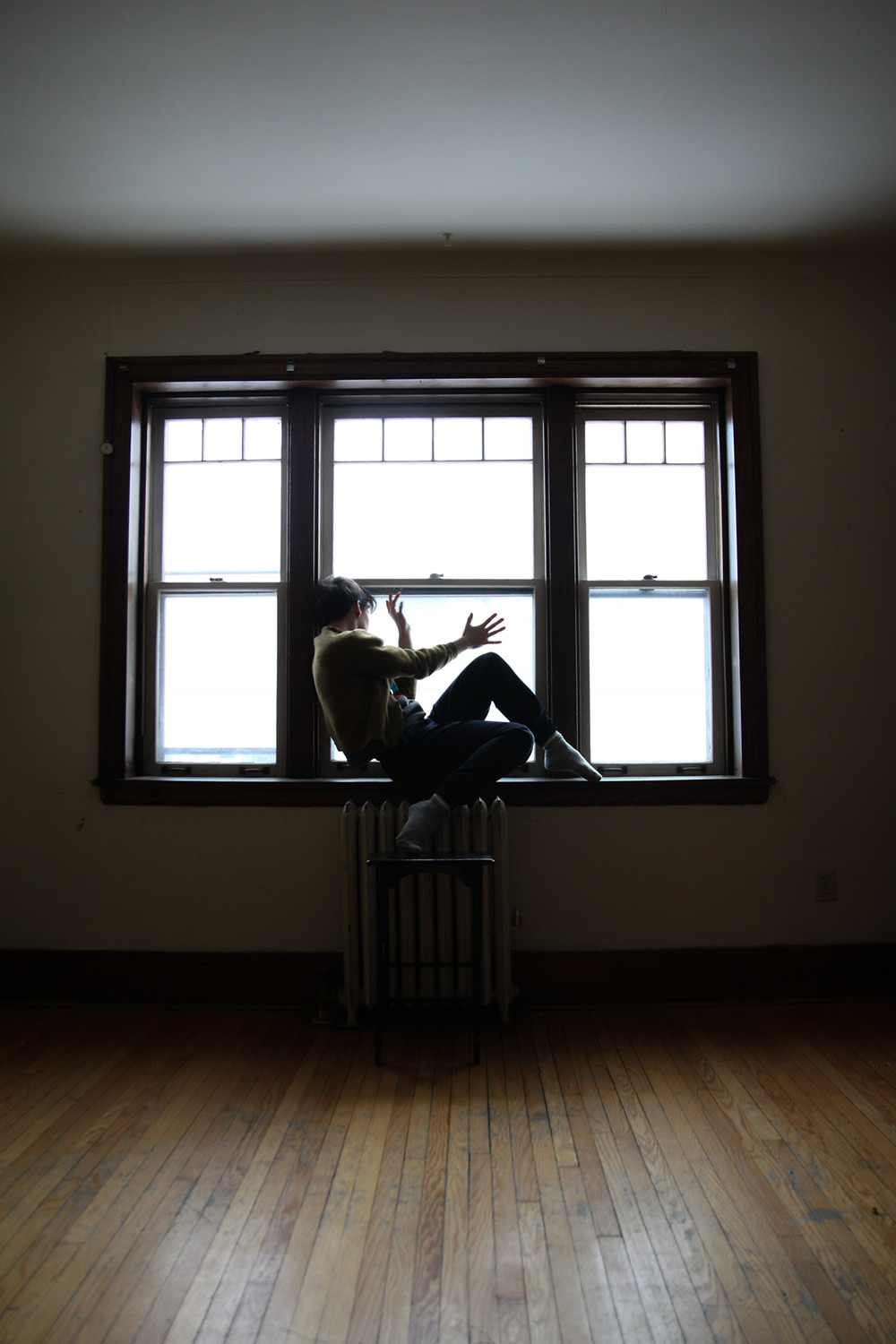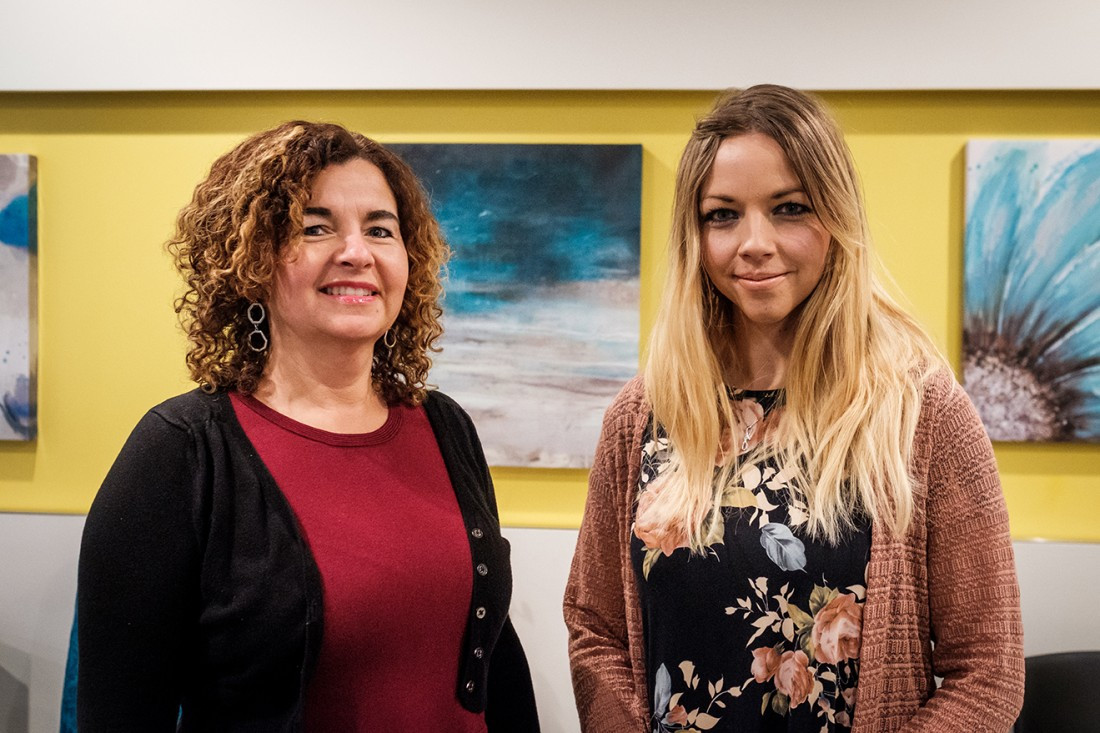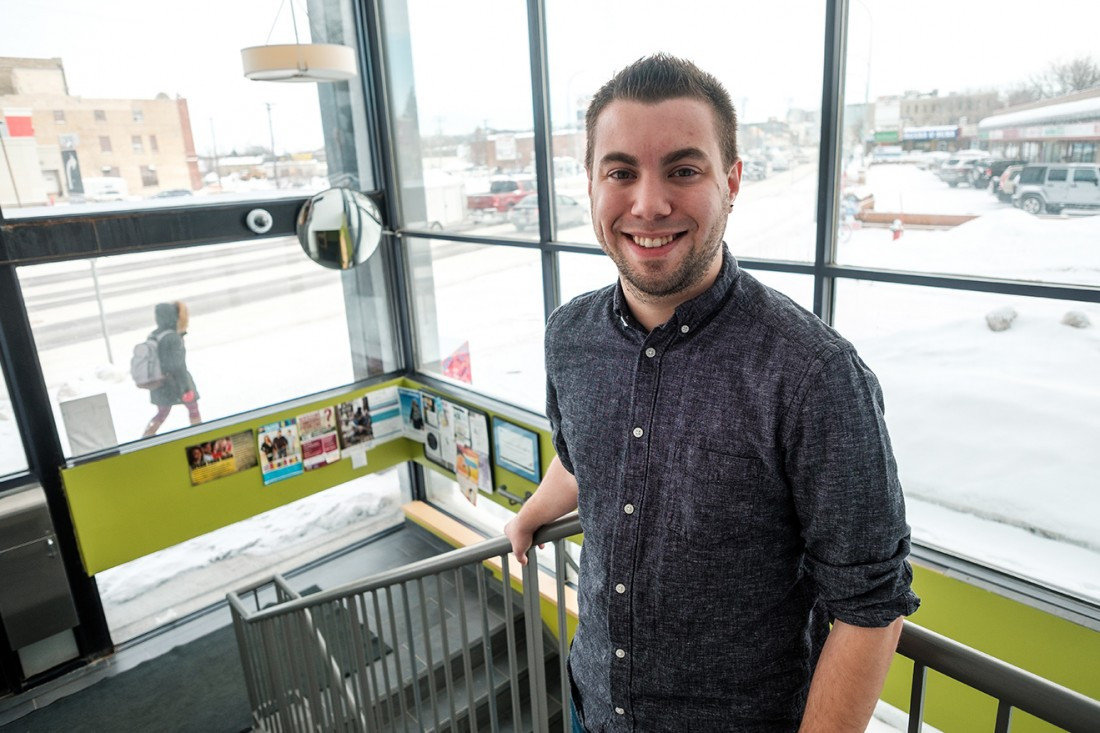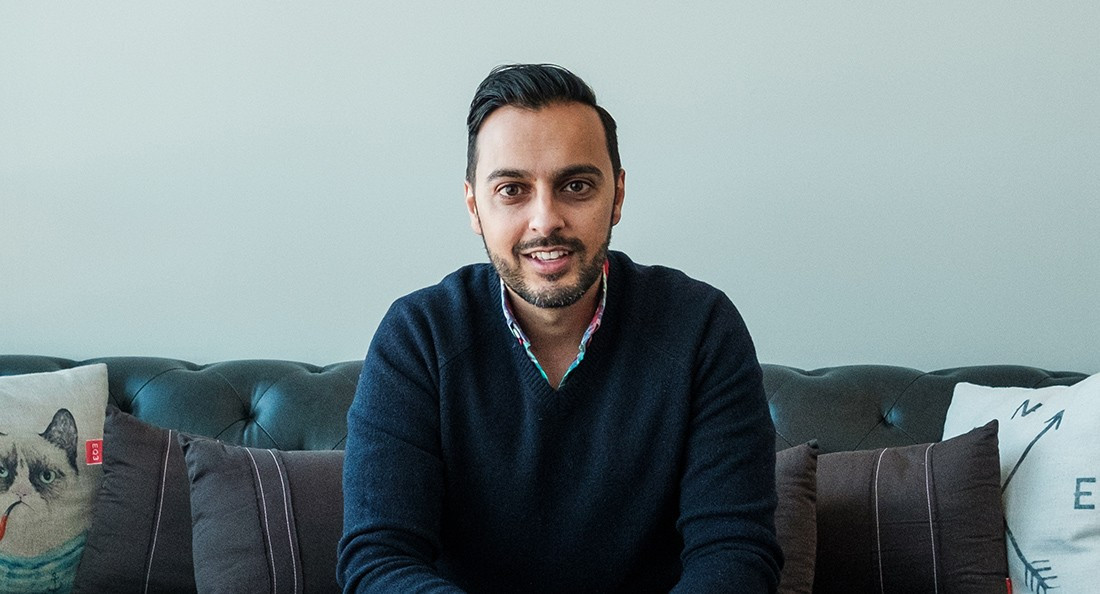Is this the age of anxiety?
Is modern life making us anxious?
There are many reasons to be anxious right now.
Midterms are approaching. There is still more winter ahead.
Tweets are declaring the end of the world. The Bulletin of Atomic Scientists’ Doomsday Clock, the symbolic countdown to the end of the world, has been pushed half a minute closer to apocalyptic midnight in light of Donald Trump’s election to the United States presidency.
The news is depressing with accusations of fascism in America and comparisons between the Trump administration and Germany’s Nazi regime. Progress on climate change and acceptance of refugees are quickly being undone, leaving behind a wake of “alternative facts” and racist sentiment.
How can we stave off the panic when even the media is panicking?
At what point does our situational anxiety become a medical condition?
What is an anxiety disorder?
According to Dr. Rehman Abdulrehman, director of Clinic Psychology Manitoba and the Public Mental Health Initiative, the difference between “normal” anxiety and an anxiety disorder lies in degree of debilitation.
“Anxiety is a common experience that everybody has,” he says. “An anxiety disorder is when that level of anxiety gets to be so problematic that it starts to interfere with somebody’s life and to interfere into their everyday, day-to-day living.”
Anxiety disorders affect 12 per cent of Canadians and will affect one in four people over their lifetime. Generalized anxiety disorder, social anxiety, phobias, panic disorder, obsessive compulsive disorder (OCD) and post-traumatic stress disorder (PTSD) all qualify as anxiety disorders.
“I guess (anxiety) is that tie that binds most of us together, and it is a common mental health disorder and, even though it is, most people don’t talk about it,” Abdulrehman says.
The Public Mental Health Initiative aims to change that through public education, community engagement and international program development.
“We’ve come a long way as a society when it comes to physical health that most people know what to do when they have a cold,” he says. “It’s not alarming. We know exactly what it is that we’re supposed to do, because we have good public education when it comes to physical health. The same can’t be said for mental health.”

Anxiety gets to be problematic when it gets in the way of day-to-day living. (Photo by Callie Morris)
Where to access resources?
There are other organizations in the city promoting awareness of mental health problems and providing resources for those struggling with them, both online and in the classroom or peer support groups. The Canadian Mental Health Association (CMHA) - Winnipeg and Manitoba division and the Anxiety Disorders Association of Manitoba (ADAM) are two of them.
Public psychological treatment is offered by referral at the Anxiety Disorders Program at St. Boniface General Hospital, but the wait time for service is generally at least a year.
“There’s a real challenge in our system in that the resources to help people are limited, so, for example, (the Anxiety Disorders Program) is the specialized clinic to help people with anxiety in Manitoba, so it serves a population of a million people, and the staffing is two psychologists,” Dr. John Walker, former director of the Anxiety Disorders Program and current professor in the department of Clinical Health Psychology at the University of Manitoba, says.
University of Winnipeg (U of W) students have access to mental health care on campus, free of charge, at the Wellness Centre. Christy Bell is one of three full-time counsellors who work at the Wellness Centre alongside nurse practitioners, while a psychiatrist and addictions counsellor are there one day a week.
Bell says that 12 to 20 students access counselling services at the Wellness Centre on any given day, and wait time for an appointment is a maximum of two weeks.
“Anxiety is one of the No. 1 reasons why we see students,” Bell says, although she maintains that doesn’t necessarily mean all the students they see have anxiety disorders.
“There are certain stressors that university students are dealing with that other people are not having to deal with, and that certainly exacerbate anxiety. So when you’re talking about things like exam anxiety, presentations, managing a debt load, living away from home for the first time, trying to juggle multiple courses, all of those are factors that contribute to anxiety,” Bell says.
“(University) can be a very isolating experience for some students, and it can be very disappointing.”
Who is affected?
Up to 70 per cent of mental health difficulties start in childhood, with symptoms of anxiety beginning as early as three or four years of age. Anxiety is generally the first mental health problem to arise, while depression is rare until the teenage years.
“The peak age for anxiety problems, and depression problems for that matter, is between 15 and 25,” Walker says. “It disproportionately affects people at that age.”
Like Bell, Walker points to the instability in the lives of young people as contributing to this prevalence.
“There’s a lot of competitiveness for jobs. Really secure jobs that we used to have that would last 30 or 40 years are declining,” he says. “There’s certainly some unique stresses that young adults face.”
Besides age, genetics and gender factor significantly in anxiety rates. Traditionally, more women have sought treatment for anxiety-related concerns than men.
“In many families, women face disproportionate workloads, disproportionate expectations compared to men and this could be a factor,” Walker says.
“Difficult experiences, things like sexual harassment, sexual assault, physical assaults – all of these things increase your risk of having an anxiety problem, and women face a heavier burden of these kinds of experiences than men.”
Abdulrehman suggests that the potential gender difference could amount to something as simple as comfort talking about one’s feelings.
“Contextually, men are not socialized to talk about their feelings,” he says. By extension, this would make them less likely to turn to mental health care, leaving them underrepresented statistically.

Lara Coombs (left) is the accessibility coordinator at the U of W, and Christy Bell (right) is a counsellor at the Student Wellness Centre at the U of W.
So, is this the age of anxiety?
“There’s a tendency for every age that people live in that people see it as the most challenging age,” Walker says. “I’m not so sure we live in a more stressful time now. It’s very controversial about whether anxiety is on the rise. We didn’t have the same measurement techniques 20 or 50 years ago that we do now.”
Abdulrehman, too, is skeptical. “As public education increases about any topic, we find that people are more likely to acknowledge that they’ve had this difficulty and be able to talk about it more openly,” he says.
He does admit that factors like political unrest and economic recession can influence anxiety rates.
“There are times when certain things can have an increase on clinical levels of anxiety, but remember also there’s that normal level of anxiety,” he says. “If a society or country is in recession, that would have some impact on some normal levels of anxiety that might trigger more clinical problems down the road.”
Bell notes the impact of the current global political climate on student concerns, particularly the effects of the new Trump administration in the United States.
“It’s certainly come up with students around ideas of being disillusioned with what’s happening on a global level, what that means particularly for students who are feeling oppressed in some way,” she says.
“We are definitely having conversations about what’s happening in the global community in counselling sessions and it does have an influence on students, for sure.”
Hilary Sain, Winnipeg bartender and poet, has had plans to spend several months in New York City since before Trump was elected. While she has not cancelled her upcoming trip, she admits to feeling high levels of anxiety about an extended stay in the United States under Trump and has recently benefitted from help from a counsellor.
“It’s so fucking stressful. I honestly feel that my anxiety blossomed and grew and turned into this beautiful creature that it is now reading about Donald Trump and the GOP and the alt-right, which is just another word for Nazi,” she says.
“Bigotry and racism and hate crimes and sexism is everybody’s problem,” she adds, reflecting on the destabilizing policy changes rapidly introduced by the Trump government and their potential effects on the mental health of an entire population.

Taylor Demetrioff, youth mental health promotion worker with the Canadian Mental Health Association.
What helps?
The two most common treatment options for anxiety disorders are Cognitive Behavioural Therapy (CBT) and medications. CBT helps individuals identify negative or problematic thought patterns and trains them to replace the anxious thoughts with calm ones. It also targets unhealthy reactions to stressors and promotes relaxation techniques to help control physical responses.
“More and more I think people are preferring, and the research is supporting strongly, that cognitive behavioural therapy is the most effective treatment for anxiety disorders,” Abdulrehman says.
Because CBT is conducted by trained professionals, access to service is often less convenient than medication. “The easiest treatment for an anxiety problem is a medicine treatment, and it’s been shown to be effective,” Walker says, although he agrees that CBT is more effective at long-term, permanent improvement than medication.
The Student Wellness Centre focuses on talk therapy but also incorporates alternative forms of treatment, like art therapy.
“We do a lot of mindfulness discussions and sessions, as well including things like meditation in sessions, working on some artwork together in sessions, encouraging (students) to be doing some of that work outside of sessions as well,” Bell says.
Anxious students also have access to academic accommodations through accessibility services (AS). Lara Coombs, accessibility coordinator at the U of W, says “mental health is probably the largest growing segment of the student population that we work with.”
AS assists students in three areas: tests and exams, classroom accommodations and campus accommodations. The most common area that students need assistance in is tests and exams.
Coombs says AS helps combat exam anxiety in two main ways: extended time and a quieter, less crowded space to write in.
“(The students) come to us, we do an intake appointment, we would talk about what happens to (them), and then our services kind of can help lessen those (anxiety-inducing) things,” Coombs says of the process. “I’m not going to say we magically make their exam anxiety go away, ’cause we don’t, but we try to.”
Taylor Demetrioff, youth mental health promotion worker at the CMHA, advocates apps as good resources for those struggling with anxiety. He recommends MindShift, a free app by the Anxiety Disorders Association of British Columbia.
“It’s like a CBT program that they specifically designed for youth, so it will ask you questions like, “what are you struggling with?” So if I said “I’m struggling with class presentations” they’d ask you questions and build a CBT program for you. It has everything from thinking right to chill-out tools and action steps and inspirational quotes,” he says. “It’s a really, really cool app.”
Winnipeg’s Klinic Community Health also developed a free app for managing stress called Calm in the Storm. It provides users with check-ins to evaluate individual stress levels, information for identifying and managing your stress, recommended practices for relief and a safety plan for avoiding suicidal thoughts.
Demetrioff, Walker and Abdulrehman all vouch for ADAM as another valuable resource.
“Manitoba has an especially strong self-help movement so the Anxiety Disorders Association of Manitoba, which is located right downtown, not too far from U of W, has very good programs,” says Walker, referring to the peer support groups hosted by ADAM.
Ultimately, there is a lot of hope for those struggling with anxiety.
“Anxiety disorders are really treatable,” Abdulrehman says. “Most people think it’s a life sentence and they’re stuck that way, and it’s actually a really manageable thing, and a little bit of information can go a long way.”
Walker agrees.
“The earlier the better but anytime, even if the problem has been there for a long time, the problems respond very well to treatment,” he says.
More information about mental health resources in Winnipeg can be found here, including a questionnaire that screens for anxiety: mbwpg.cmha.ca/resources/mental-health-resource-guide-for-winnipeg/.
For more resources on campus, visit uwinnipeg.ca/student-wellness/.
An audio relaxation exercise can be found here: adam.mb.ca/audio-relaxation.
Published in Volume 71, Number 19 of The Uniter (February 9, 2017)








